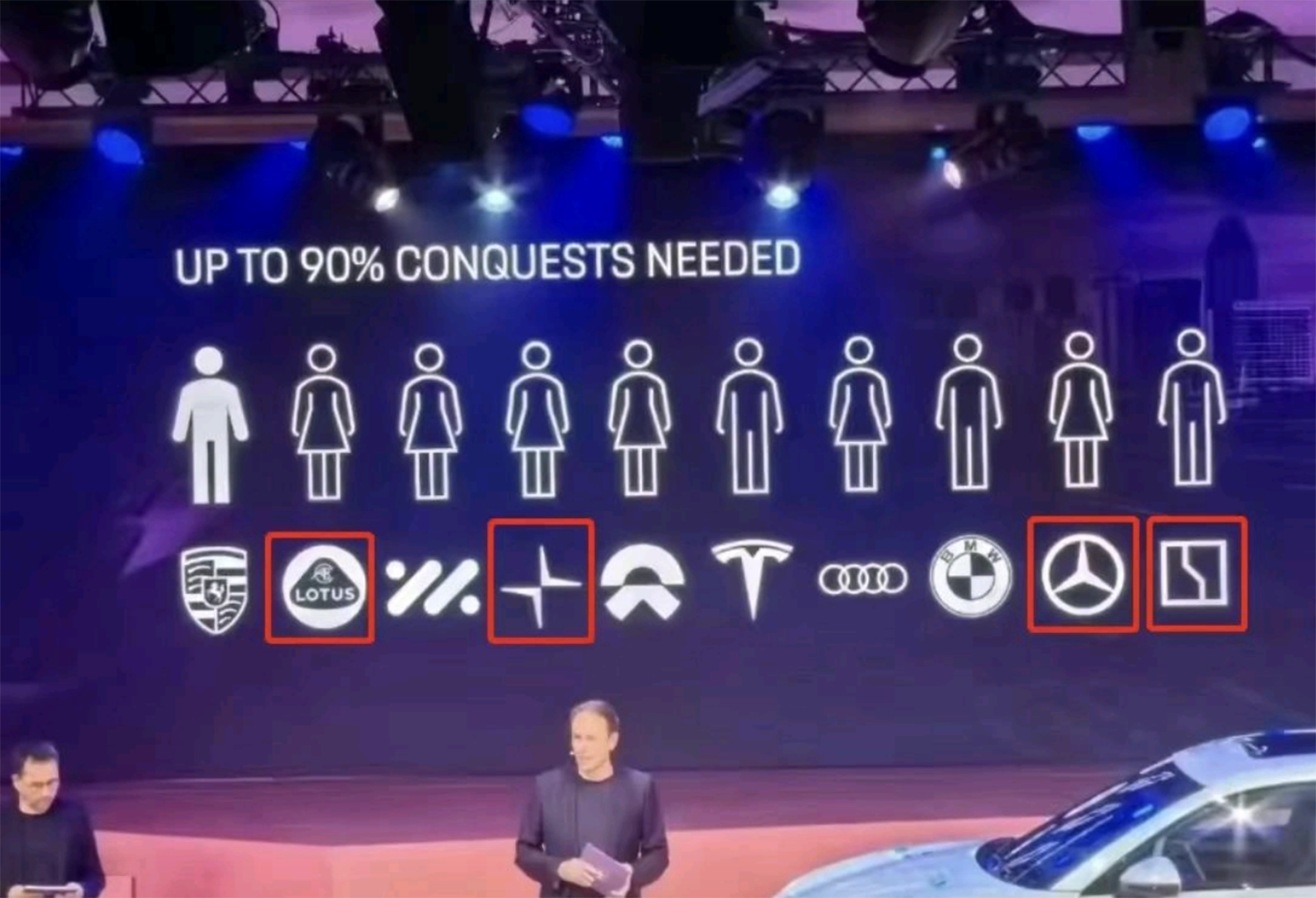Navigating The Chinese Market: The Struggles Of BMW, Porsche, And Competitors

Table of Contents
Intense Domestic Competition
The rise of domestic Chinese automakers poses a significant threat to established luxury brands like BMW and Porsche. These domestic brands are rapidly improving their quality, technology, and brand image, offering compelling alternatives at competitive prices.
Rise of Domestic Brands
Chinese automakers are no longer just producing budget-friendly vehicles. Companies like BYD, NIO, and Li Auto are creating sophisticated, technologically advanced cars that directly compete with – and often surpass – established foreign brands in key areas.
- BYD: Known for its Blade Battery technology and strong hybrid and electric vehicle offerings, BYD is aggressively expanding its market share, appealing to environmentally conscious and technologically savvy consumers.
- NIO: NIO focuses on a premium electric vehicle experience, offering battery swapping services and a strong community focus, appealing to a more affluent customer base.
- Li Auto: Specializing in extended-range electric vehicles (EREVs), Li Auto provides a compelling alternative to pure EVs, addressing range anxiety concerns prevalent among Chinese consumers.
These brands successfully appeal to Chinese consumers through:
- Advanced Technology: Integration of cutting-edge features such as autonomous driving capabilities, sophisticated infotainment systems, and connected car technologies.
- Electric Vehicle Options: A strong focus on electric and hybrid vehicles caters to the growing environmental awareness and government incentives promoting electric mobility in China.
- Patriotic Appeal: A growing sense of national pride fuels consumer preference for domestic brands, influencing purchase decisions.
The Chinese government's active support for domestic automakers through subsidies, tax breaks, and infrastructure development further strengthens their competitive position. This support, combined with shifting consumer preferences, creates a significant challenge for foreign luxury brands seeking to maintain market share.
Joint Venture Challenges
Many foreign automakers entered the Chinese market through joint ventures with local partners. While this approach initially provided access to the market and local expertise, it also presents ongoing challenges. Profit sharing agreements, technology transfer stipulations, and evolving regulatory environments regarding foreign ownership create complexities that impact profitability and long-term strategic planning.
- Successful Joint Ventures: Some joint ventures have proven highly successful, leveraging the strengths of both partners to achieve significant market penetration. However, these successes often require meticulous planning and strong collaboration.
- Unsuccessful Joint Ventures: Other ventures have faltered due to disagreements over profit allocation, technological control, and differing strategic visions.
- Changing Regulatory Environment: The Chinese government is gradually relaxing restrictions on foreign ownership in the automotive sector, offering opportunities for greater control but also requiring significant adaptation and investment.
Choosing between establishing a joint venture or operating independently requires careful consideration of the risks and rewards. Each approach necessitates a deep understanding of the regulatory landscape and the specific dynamics of the Chinese market.
Shifting Consumer Preferences
Understanding and adapting to the evolving preferences of Chinese consumers is crucial for success in the luxury car market.
Technological Advancements
Chinese consumers are highly tech-savvy and expect cutting-edge features in their vehicles. Falling short in this area can significantly impact market acceptance.
- Advanced Driver-Assistance Systems (ADAS): Features such as adaptive cruise control, lane keeping assist, and automated parking are highly sought after.
- Connectivity and Infotainment: Seamless smartphone integration, advanced navigation systems, and high-quality audio are considered essential.
- Electric Vehicles (EVs): The demand for electric vehicles is rapidly growing, driven by government policies and increasing environmental awareness.
Domestic brands often offer more advanced and localized technology features than some foreign competitors, particularly in areas like in-car digital payment systems and localized navigation. Therefore, international brands must prioritize technology localization to compete effectively.
Brand Perception and Marketing
Adapting marketing strategies to resonate with Chinese consumers' unique values and preferences is critical.
- Successful Marketing Campaigns: Those that leverage social media platforms like WeChat and Weibo, utilize celebrity endorsements, and effectively communicate brand values aligned with Chinese culture.
- Unsuccessful Marketing Campaigns: Those that fail to consider cultural nuances or attempt a direct translation of Western marketing strategies.
Understanding the cultural context and tailoring messaging accordingly are paramount. Building strong relationships with key opinion leaders (KOLs) and utilizing localized social media campaigns are essential elements of successful marketing in the Chinese luxury car market.
Regulatory and Economic Factors
Navigating the regulatory and economic landscape is another key challenge for luxury carmakers in China.
Import Tariffs and Regulations
High import tariffs and stringent regulations impact pricing strategies and profitability.
- Impact on Pricing: Tariffs increase the cost of imported vehicles, potentially making them less competitive compared to domestically produced alternatives.
- Impact on Market Share: High prices can limit market access and hinder expansion plans.
Strategies to mitigate these impacts include local production, exploring alternative supply chains, and actively engaging with the regulatory bodies to influence policies.
Economic Uncertainty and Fluctuations
Economic downturns and shifts in consumer spending patterns can significantly impact sales in the luxury automotive segment.
- Economic Trends: Monitoring economic indicators such as GDP growth, inflation, and consumer confidence is crucial for anticipating market fluctuations.
- Correlation with Luxury Car Sales: Luxury car sales are highly sensitive to economic conditions; downturns often lead to reduced demand.
Strategies for navigating economic uncertainty include diversification of product offerings, flexible pricing strategies, and building brand resilience to withstand market volatility.
Conclusion
Navigating the Chinese market presents significant challenges for luxury carmakers like BMW and Porsche. Intense domestic competition, evolving consumer preferences, and regulatory hurdles require sophisticated strategies for success. By carefully considering the factors outlined above – domestic brand competition, technological advancements, marketing adaptation, and economic fluctuations – international automakers can better position themselves for long-term growth in this vital market. Understanding the complexities of navigating the Chinese market is key to achieving sustainable success in the world's largest automotive market. Don't let the challenges deter you; learn from the experiences of BMW, Porsche, and their competitors and develop a robust strategy to conquer this dynamic landscape. Successfully navigating the Chinese market requires a nuanced understanding of its unique challenges and opportunities.

Featured Posts
-
 Canelos Former Foe Calls For Second Fight Following Recent Victory
May 04, 2025
Canelos Former Foe Calls For Second Fight Following Recent Victory
May 04, 2025 -
 Lizzos Boyfriend Myke Wright Net Worth Job And Relationship Details
May 04, 2025
Lizzos Boyfriend Myke Wright Net Worth Job And Relationship Details
May 04, 2025 -
 Verstappens Baby Joy First Child Born Ahead Of Miami Gp
May 04, 2025
Verstappens Baby Joy First Child Born Ahead Of Miami Gp
May 04, 2025 -
 Premer Frantsii Referendum O Reformakh Novye Plany
May 04, 2025
Premer Frantsii Referendum O Reformakh Novye Plany
May 04, 2025 -
 Zuschauerzahlen Esc 2025 Vorentscheid 1 Deutschland
May 04, 2025
Zuschauerzahlen Esc 2025 Vorentscheid 1 Deutschland
May 04, 2025
